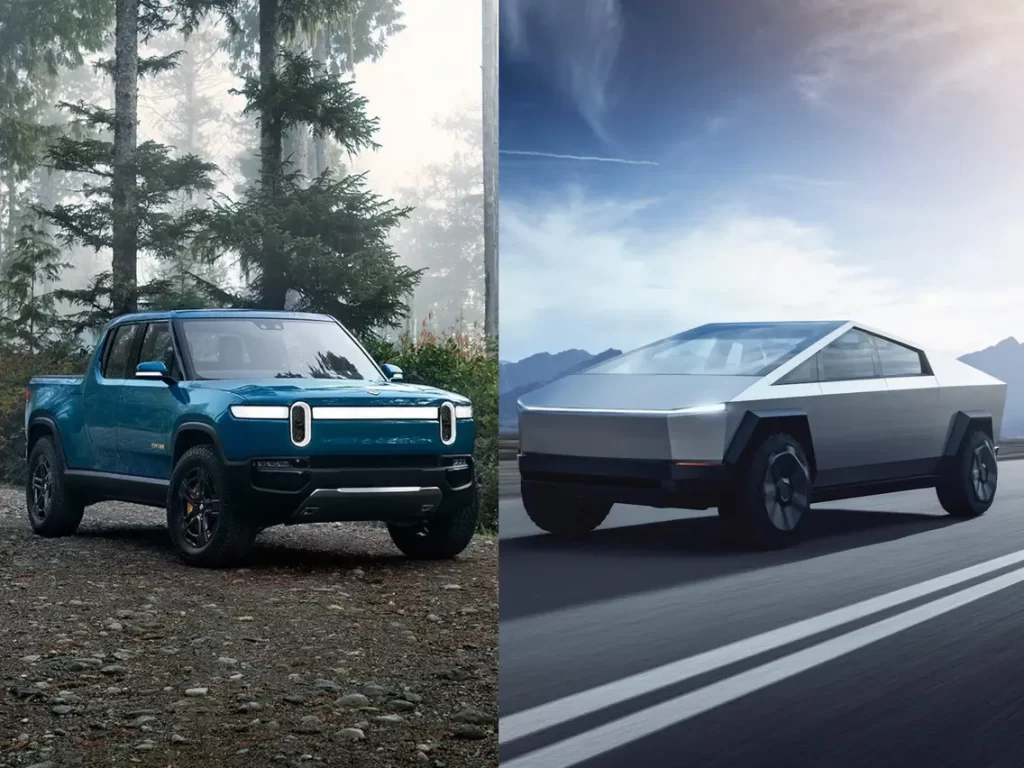Underestimated Competition: How Competitive Intelligence can help.

Ever consider Competitive Intelligence in the Electric Vehicle market?
A peculiar things happened just recently as the CEO of Rivian was asked about Tesla competition. It’s obvious that as the electric vehicle (EV) market matures, competition is becoming more fierce and diverse. However, when speaking about Tesla, Rivian’s CEO, RJ Scaringe, stated…
“If you were to think of the Venn diagrams of customers, there’s probably not a lot of overlap.”
RJ Scaringe
This sentiment may underestimate the competition between Rivian’s R1T and Tesla’s Cybertruck. Does anyone remember what the Blackberry Chief Operating Officer said about the iPhone? He didn’t think there was much competition either. Here are his words…
“It wasn’t secure,” COO Larry Conlee told the book’s authors. “It had rapid battery drain and a lousy [digital] keyboard.”
Larry Conlee
We all know who won the iPhone vs. Blackberry competition.
Competitive analysis starts with Customer Analysis.
Competitive analysis is a process that, when done well, starts with customer analysis. Scaringe referred to customer persona analysis in his statement, and I commend him for segmenting the markets. He may be right.
The question is, is this a case that the personas of the electric truck buyers are so distinct that a buyer of a Rivian may not consider a Tesla Cybertruck? Would you risk your career on it? It is a huge ‘all in’ type bet. As a CI professional, I propose corporations err on the side of ‘Yes, that could be competitive.”
Key message: Be prepared.
Differentiation Analysis grounds competitive analysis.
So, where do you start if you have established a culture of competitiveness and not dismissiveness? With the facts.
A vital part of the CompeteIQ Method is to begin with the facts. So what are they? The Rivian R1T and Tesla Cybertruck showcase distinct aesthetics and features, potentially attracting different customer segments. Heck, they even look different. The Cybertruck’s bold, futuristic design starkly contrasts with the R1T’s blend of traditional and modern aesthetics.
Criteria, Values, and Differentiation Analysis
Tesla Cybertruck:
– Body: Features a stainless steel exoskeleton, imparting a rugged, avant-garde appearance.
– Ruggedness: Equipped with armored glass for enhanced durability.
– Design: The design is angular and minimalist, symbolizing a radical departure from conventional truck designs.
Rivian R1T:
– Body: Embodies a more conventional pickup design with a contemporary touch, marked by smooth lines and a polished profile.
– Innovation: Boasts a customizable gear tunnel and innovative lighting.
– Design: Appears more accessible to traditional truck enthusiasts, bridging the gap between classic pickups and futuristic EVs.
In the above example, we should analyze both offerings according to body, ruggedness, innovation, and design. Of course, there are more, but this is a short blog.
Combine Customer Analysis & Differentiation Analysis
The design distinctions hint at varied customer appeal. Cybertruck might magnetize the tech-savvy, drawn to innovation and desiring a distinct vehicle buyer. The R1T could attract current pickup owners eyeing an electric shift without veering drastically from the familiar design.
Does this reach the threshold of something akin to sports cars vs. sedans, two distinct markets, even though they share some overlap? Interested in your thoughts.
But this blog is about the culture of competitiveness at an organizational level.
CI Best Practice: Avoid The Echo of Dismissiveness
I have led programs spanning Cisco, Symbol Technologies, Juniper Networks, and Polycom. Over the years, I’ve experienced both over-competitiveness and dismissiveness. Experience has taught me that underestimating the competition can lead to significant consequences. When company leaders deny the presence of competition, it can undermine the effectiveness of sales and marketing efforts and foster a culture of complacency. True, It’s important not to become overly fixated on the competition, but at the same time, it’s unwise to ignore it completely. Striking the right balance is critical.
Competition: Dance, even without music sometimes.
The question is how. The answer is ‘Tiering.’ Tiering is classifying a competitor, or a competitor product, by risk or threat level. Even if senior leaders state there is no threat, as a CI leader, you should. How much do you invest? It may not be a Tier One competitor that garners much analysis and cost. It could be a tier-two competitor or tier-three competitor with minimal coverage.
Key Message: Never be caught off guard.
So, face the music. Recognize and classify the competition. Regardless of the CEO’s opinion, your customers will recognize you as the Competitive Expert. They expect you to have answers on demand when supporting sales. A tool like CompeteIQ’s Tiering capabilities and Differentiation Analyzer makes this process much easier and more effective.
Unfolding the Competitive Future
In the electric truck dawn, adaptability and responsiveness are pivotal. Scaringe’s view of limited customer overlap with Tesla belies the fluidity of this evolving industry. Rivian’s ally lies in data analytics and market research, unraveling the complex consumer preference web. Then, swift adaptation to trends and feedback is Rivian’s ticket to innovation and relevance.
In the electrified landscape, competition isn’t just inevitable but a catalyst for innovation and customer value enhancement. Rivian and Tesla, with distinct offerings, can coexist. However, as illuminated by sometimes painful experiences, the peril of underestimating the competitor can herald unforeseen challenges and eclipsed opportunities.

